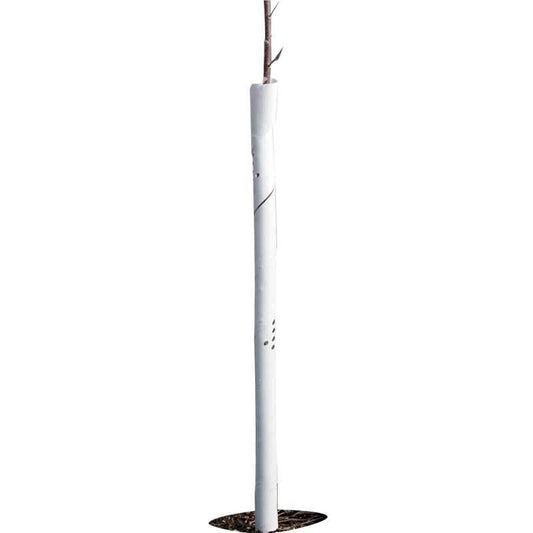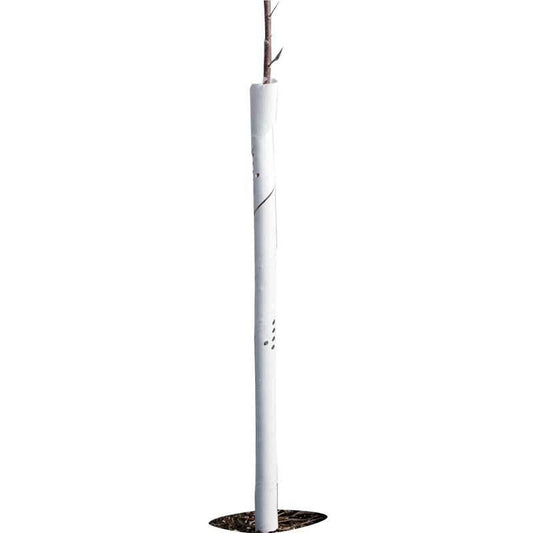Protect Your Garden from Sun Damage This Summer
Just as we use sunscreen to shield our skin from harmful UV rays, plants also need protection from the intense summer sun. While plants can’t wear sunscreen, there are several effective ways to prevent sun damage in your garden. Sun damage, which affects both foliage and bark, can weaken plants and leave them vulnerable to pests and diseases. With the right care and preventive measures, you can keep your garden thriving all summer long.
Understanding Sun Damage
Sun damage in plants manifests in two primary forms: sunburn (or leaf scorch) and sunscald. Both result from excessive sunlight, heat, and often dehydration, but they affect plants in different ways.
1. Sunburn (Leaf Scorch)
Sunburn affects the foliage of plants and typically occurs when leaves are exposed to intense light and heat. This damage is more severe when plants are dehydrated.
-
Symptoms:
- Yellowing or browning of leaves.
- Damage often starts between the leaf veins.
- Severe cases lead to dead, crispy leaves.
-
Impact:
- Reduces photosynthesis.
- Weakens the plant, making it more susceptible to diseases and pests.
2. Sunscald
Sunscald is more commonly seen in tree bark but can also affect fruits. It occurs when bark or fruit is exposed to direct sunlight for prolonged periods.
-
Symptoms:
- Cracked, scarred, or discolored bark.
- Girdling cankers that restrict nutrient flow.
- Fruit with damaged skin, increasing susceptibility to pests and rot.
-
Impact:
- Weakens the plant structure.
- Can be fatal if the bark becomes girdled.
Preventing Sun Damage
While sun damage can be devastating, there are many steps you can take to protect your plants and trees from its harmful effects.
1. Choose Sun-Tolerant Plants
When designing your garden, select plants that are native to your region or well-adapted to the light and heat conditions of your area. Native plants are naturally equipped to handle the local climate and require less intervention.
For established plants, avoid moving them to locations with significantly more sunlight than they are accustomed to. If transplantation is necessary, gradually introduce the plant to its new light conditions.
2. Mulching for Protection
Mulching is an effective way to reduce heat stress and protect plants from sun damage.
-
Benefits of Mulching:
- Conserves soil moisture.
- Lowers soil temperature.
- Reduces reflective light around plants.
-
How to Mulch:
- Apply a 3- to 6-inch layer of biodegradable mulch, such as wood chips, straw, or cocoa hulls, around the root zone.
- Leave a few inches of space between the mulch and the plant stem or tree trunk to prevent crown rot and discourage pests.
3. Provide Shade
Temporary shading can protect plants during extreme heat or intense sunlight.
- Shade Cloth: Install shade fabric over smaller plants to reduce light intensity. Choose the appropriate level of shade for each plant species to avoid stunting growth.
- Tree Trunk Protection: For young trees or those with thin bark, use Spiral Tree Guards or tree wraps to shield exposed areas. These wraps not only provide shade but also protect against insects and rodents.
4. Painting Tree Trunks
Whitewashing tree trunks is a time-tested method for preventing sunscald.
-
How to Paint:
- Use a mixture of interior latex paint and water (1:1 ratio).
- Apply to exposed areas of the trunk and larger limbs.
-
When to Paint:
- For young trees, paint the trunk annually until the canopy provides sufficient shade.
- For mature trees, focus on exposed bark areas.
Proper pruning can also help prevent sunscald. Avoid removing more than 20% of the canopy in a single year, as this can leave bark overly exposed.
5. Protecting Fruits from Sunscald
Sunscald on fruits can ruin the quality of your harvest. To protect fruits:
- Provide adequate leaf cover by avoiding over-pruning.
- Use shade cloths to protect fruit-bearing branches during extreme heat.
Caring for Plants During Extreme Heat
In addition to preventing sun damage, general summer care practices are essential for keeping your garden healthy:
1. Watering Wisely
Dehydration exacerbates sun damage, so proper watering is critical.
- Water deeply in the early morning or late evening to minimize evaporation.
- Use drip irrigation systems to ensure consistent moisture at the root level.
- Check soil moisture regularly and adjust watering frequency based on weather conditions.
2. Monitor Plant Health
Keep an eye on your plants throughout the summer:
- Look for early signs of sunburn or sunscald and take corrective action immediately.
- Regularly inspect trees and shrubs for cracks in the bark or discoloration of leaves and fruit.
Why Sun Protection Matters
Protecting your plants from sun damage is more than just preserving aesthetics. Sunburn and sunscald weaken plants, reducing their ability to photosynthesize, absorb nutrients, and resist pests and diseases. Addressing these issues proactively ensures a thriving, productive garden.
Final Thoughts
Summer sun can be harsh on your garden, but with the right strategies, you can minimize the risks and keep your plants healthy. From selecting sun-tolerant species and mulching to providing shade and whitewashing tree trunks, these simple techniques can make a big difference. As the days grow longer and hotter, take the time to protect your plants from the sun and enjoy the beauty and bounty of a flourishing garden.








2 comments
Do you have any advice for treating sunscald once it’s on the tree?
Janet, once your tree has it you can’t reverse it, but you can wrap it to prevent further damage. You can use the spiral tree guards or follow the directions for making up the latex paint (not approved by organic certifiers).